After decades of continuous use by commercial and student aircraft, the taxiway parallel to the primary runway at Daytona Beach International Airport (DAB) was exhibiting multiple pavement distresses. The most prominent issues were weathering and longitudinal and transverse cracking. Pavement cores revealed that many of the cracks extended completely through the asphalt.
After decades of continuous use by commercial and student aircraft, the taxiway parallel to the primary runway at Daytona Beach International Airport (DAB) was exhibiting multiple pavement distresses. But it was nothing a thorough pavement rehab couldn’t fix.
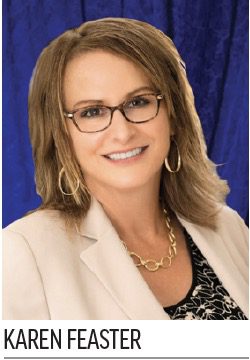 The most prominent issues were weathering and longitudinal and transverse cracking. Pavement cores revealed that many of the cracks extended completely through the asphalt. The presence of other surface distresses like corrugation and rutting signaled the need for a full rehabilitation of the asphalt.
The most prominent issues were weathering and longitudinal and transverse cracking. Pavement cores revealed that many of the cracks extended completely through the asphalt. The presence of other surface distresses like corrugation and rutting signaled the need for a full rehabilitation of the asphalt.
While the ball was already rolling, management at the Florida airport also opted to improve portions of two other taxiways, execute major geometry updates and install nearly 1,000 LED lights and airfield signs.
|
Project: Taxiway Improvements Location: Daytona Beach (FL) Int’l Airport Scope: Rehabbed Taxiway N (10,500 ft. long; 75 ft. wide) & portions of taxiways A & P; updated geometry of 11 adjacent connectors; installed LED lights & airfield signs Cost: $37.4 million Funding: 90% FAA; 5% FL Dept. of Transportation; 5% airport enterprise funds Flight School Stakeholders: Embry-Riddle Aeronautical University; Phoenix East Aviation; ATP Flight School Airline Stakeholders: Delta; American; Sun Country; Sunwing Construction: 2 years/24 phases Completed: Nov. 2020 Design Engineer: AVCON Resident Inspection Service: RS&H Construction: Halifax Paving; P&S Paving Electrical Subcontractor/Lighting & Equipment Installation: H.L. Pruitt Corp. Lighting & Sign Manufacturer: ADB SAFEGATE New Electrical Vault Equipment: ADB SAFEGATE Airfield Striping: Better Barricades Inc.; Roads & Runways Striping Service Inc. Airfield Barricades: Neubert Aero Corp.; etc. |
When reflecting on the $37.4 million project, Airport Director Karen Feaster is proud to report that not a single safety issue or disruption to airline operations occurred during the entire two years and 24 phases of construction.
Feaster is quick to highlight the tremendous amount of communication that occurred to achieve the positive outcome. She points to a log of no less than 136 emails to stakeholders—complete with diagrams and revisions upon revisions of ever changing taxi routes—as a key tool. The emails, Feaster explains, served as a unifier that kept all involved parties informed as the coastal airport worked to keep its runways, taxiways, airfield markings and lighting in safe, serviceable condition.
Performance Under Pressure
The project, which was completed last November, included the complete rehabilitation of asphalt on Taxiway N (10,500 feet long, 75 feet wide) and portions of taxiways A and P. The airport also rehabilitated 11 taxiway connectors. As a subpart of this project, under the FAA’s Runway Incursion Mitigation program, the scope included the complete removal and relocation of Taxiway N5, P4 and P5 to eliminate a direct apron to runway access.
In order to meet new design criteria in FAA Advisory Circular 150/5300-13A and comply with the Runway Incursion Mitigation program, construction affected the busiest section of the airfield. And it all happened while traffic was booming.
“Our airport was the busiest in Florida for aircraft operations for the months of August, September and October [2020], and the second-busiest for November,” reports Feaster. “So you can imagine the level of coordination that took place over the duration of the construction period.”
In addition to unprecedented growth in commercial traffic, DAB was also experiencing the effects of record enrollment at three pilot training centers on the airfield: Embry-Riddle Aeronautical University (the largest flight school in the state), Phoenix East Aviation and ATP Flight School.
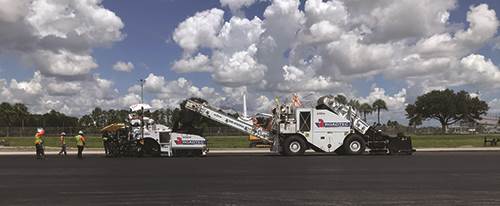
Amid the national trend of declining enrollments, the spikes were noteworthy—and the associated increases in training flights at DAB continued throughout the taxiway project. In fact, student traffic peaked just as the airport was preparing to complete the airfield work. “It was a very tenuous situation in terms of maintaining our construction safety phasing plan, which of course is required by the FAA, and that we followed,” recalls Erik Treudt, director of projects and maintenance at DAB.
Beyond sending email blasts, the airport convened weekly meetings with stakeholders such as airlines, tenants, the FAA and Florida Department of Transportation. The meetings were held in person until COVID-19 restrictions began, and then continued virtually. Treudt notes that both formats proved tremendously helpful for keeping all stakeholders informed.
The project team also regularly distributed bulletins and exhibits that identified upcoming changes to ground traffic patterns for all affected parties.
 “With Embry-Riddle as our partner, we met every week to make sure everybody was on the same page,” Treudt says. “We understood new taxiway instructions, especially for the new students, were a critical part of keeping this project safe. And we did not have any safety incidents at all during the entirety of this project. The partnerships between the control tower and Embry-Riddle and our other flight schools really made all of the difference on a weekly basis.”
“With Embry-Riddle as our partner, we met every week to make sure everybody was on the same page,” Treudt says. “We understood new taxiway instructions, especially for the new students, were a critical part of keeping this project safe. And we did not have any safety incidents at all during the entirety of this project. The partnerships between the control tower and Embry-Riddle and our other flight schools really made all of the difference on a weekly basis.”
Feaster concurs: “Communication was a critical piece of this project, with all of the training pilots and the amount of operations we had throughout the project—but especially in the end, when we were dealing with COVID accommodations, as well, and all of those effects. In addition to weekly meetings, the constant email for all stakeholders with all the details worked really well.”
Collaboration From Start to Finish
Feaster also gives high marks to the design team and its thorough method that served as a means to an end.
“We had several meetings during the design process with all the stakeholders to really go through the phasing plan and how it was going to affect people and what we had to do,” she explains. Attendees included representatives from Embry-Riddle, Air Traffic Control, flight operations, tech operations and fixed based operators. “We collectively thought through every step of the project and got input from everybody—all the end users, all the stakeholders.”
Feaster credits AVCON, the project’s engineer of record, for listening to stakeholders and keeping in mind efficiency, time and cost when deciding what made the most sense.
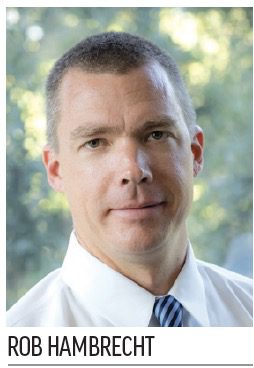
Rob Hambrecht, the senior project manager with the firm, amassed seven years of files and photographs that document the project from pre-planning to completion. He fondly recalls watching the project progress through field meetings and aerial photographs of the busy work site and 11 taxiway connectors, each of which is heavily used on a daily basis.
“Very early on in the process, FAA said the runway didn’t need to keep all 11 of the existing taxiway connectors,” Hambrecht recalls. So he and the DAB team promptly sat down with personnel from FAA and Air Traffic Control to make the case that the airport’s capacity would be crippled if it lost any of the connectors.
After AVCON submitted a report that detailed how each of the taxiway connectors is used for the launch and recovery procedures of aircraft, the FAA ultimately agreed to keep all
11 connectors intact as the airport rehabilitated its primary air carrier taxiway.
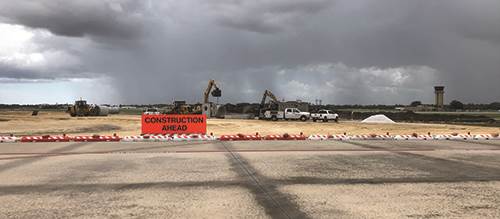
“It was pretty monumental because the FAA is all about getting rid of mid-field taxiways, but it was demonstrated that this airport just could not function efficiently without intersection departures from flight school aircraft,” Hambrecht says. “Air Traffic Control will stack aircraft up and use each of them all day long.”
The design team developed multiple construction phasing and sequencing alternatives, and numerous workshops with airport users helped narrow the field to a plan deemed to be both safe and economical. Ultimately, the project was divided into 24 construction phases over a two-year construction period; and the result was an incident-free major project on an otherwise uniquely active airfield, notes Hambrecht.
During construction, crews installed more than 115,000 tons of asphalt over 2.8 million square feet on Taxiway N and portions of taxiways A and P. The new surfaces are illuminated by 816 LED airfield lights and include 112 LED guidance signs.
DAB’s Treudt characterizes local construction contractors Halifax Paving and P&S Paving as wonderful partners to work with. “They really went out of their way to make sure that we got the taxiway back as quickly as we needed to,” he says.
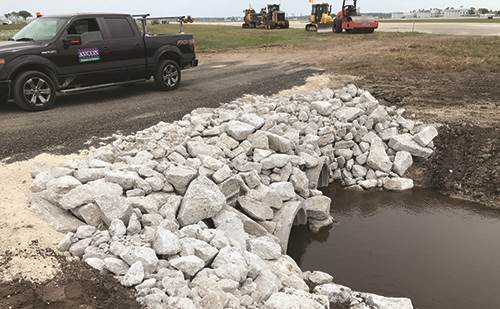
Treudt also notes that the airport’s annual economic impact of $2.1 billion is important to the local Volusia County community. “Without this taxiway project, our airport would suffer and the community at large would suffer,” he elaborates. “Not only would it reduce the amount of traffic for Embry-Riddle students to be able to use the main runway, but of course it would affect our traveling public because then the commercial service carriers would not be able to function efficiently, appropriately and safely, which is more important than anything.”
| Editor’s Note: In late July, Daytona Beach Int’l was named 2021 Commercial Service Airport of the Year by Florida Department of Transportation. Its taxiway project was highlighted as a major safety accomplishment. |

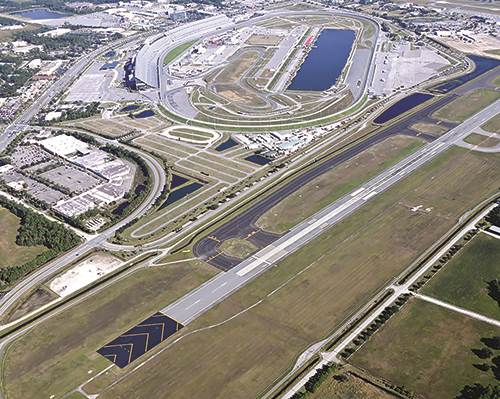
 facts&figures
facts&figures

